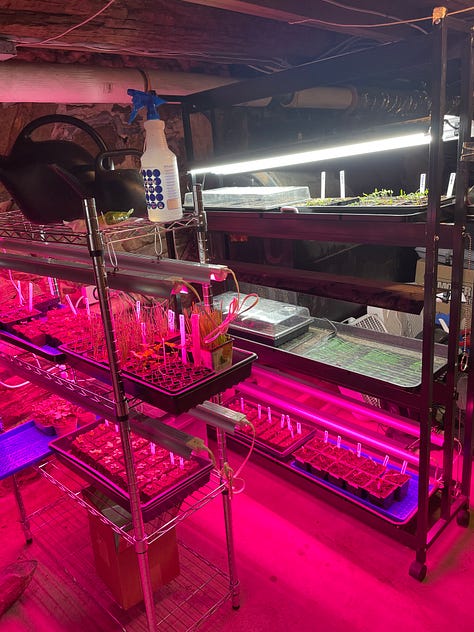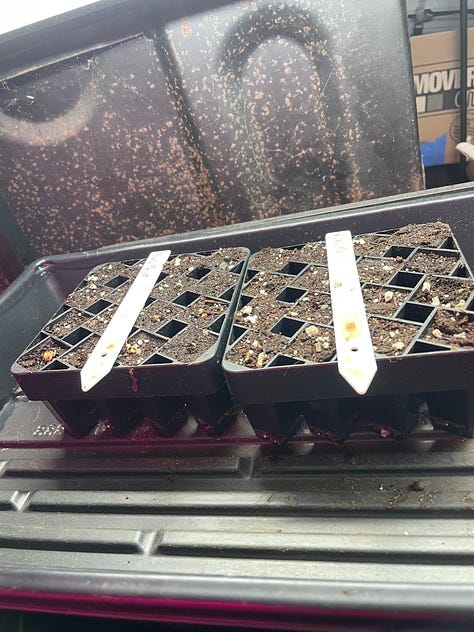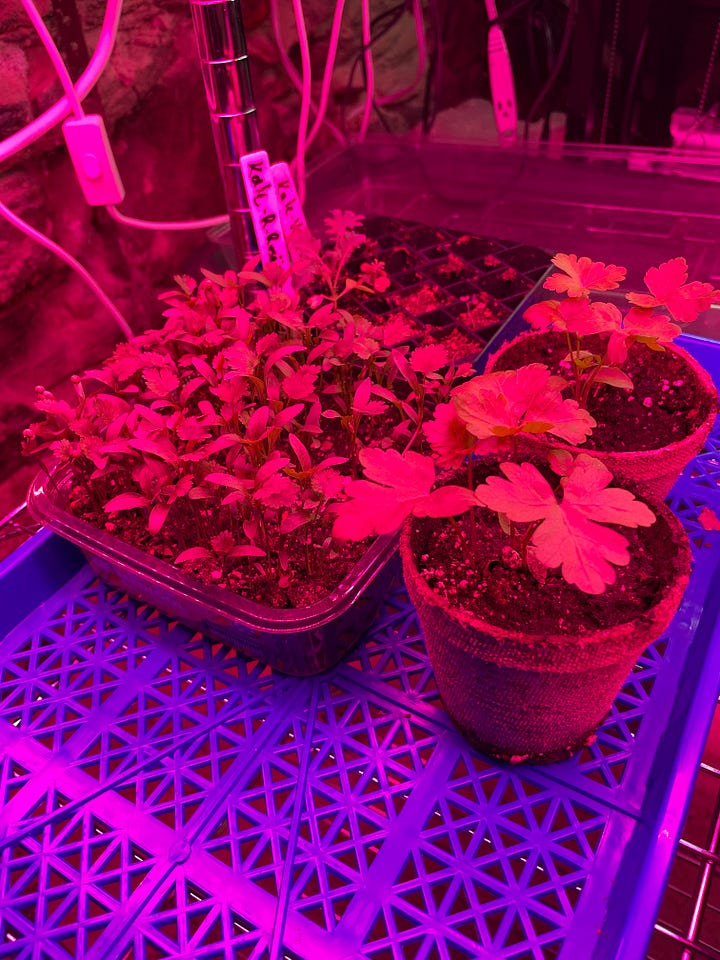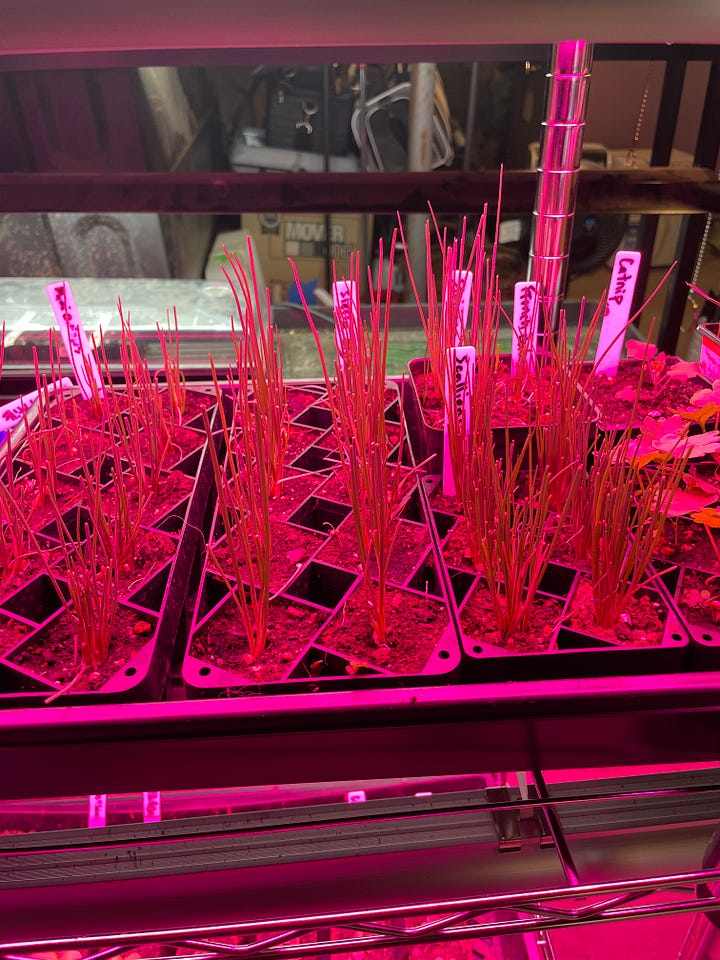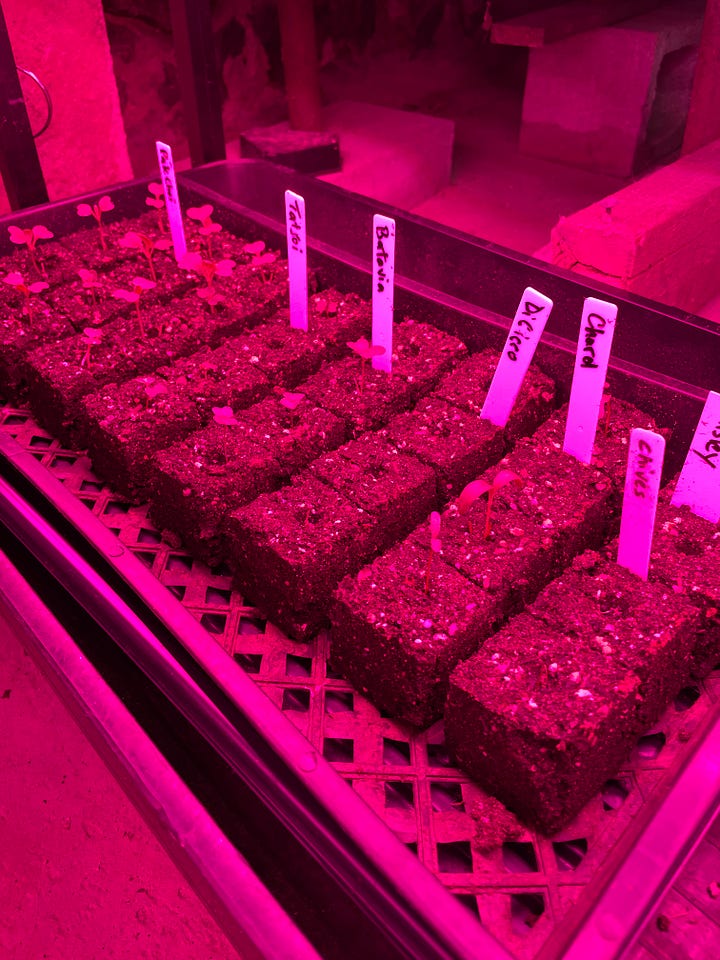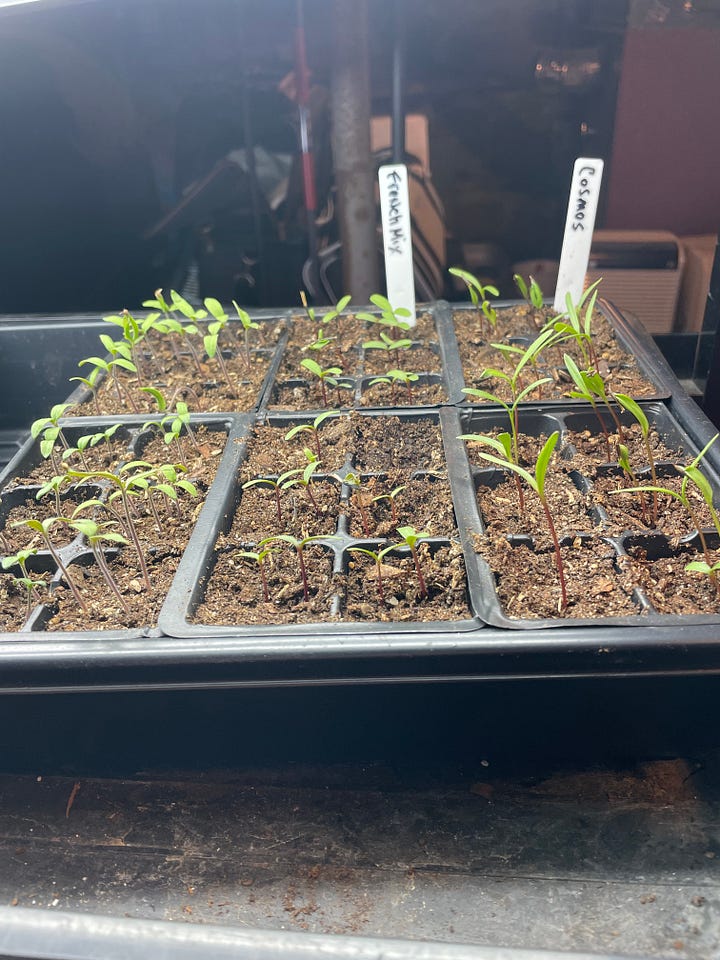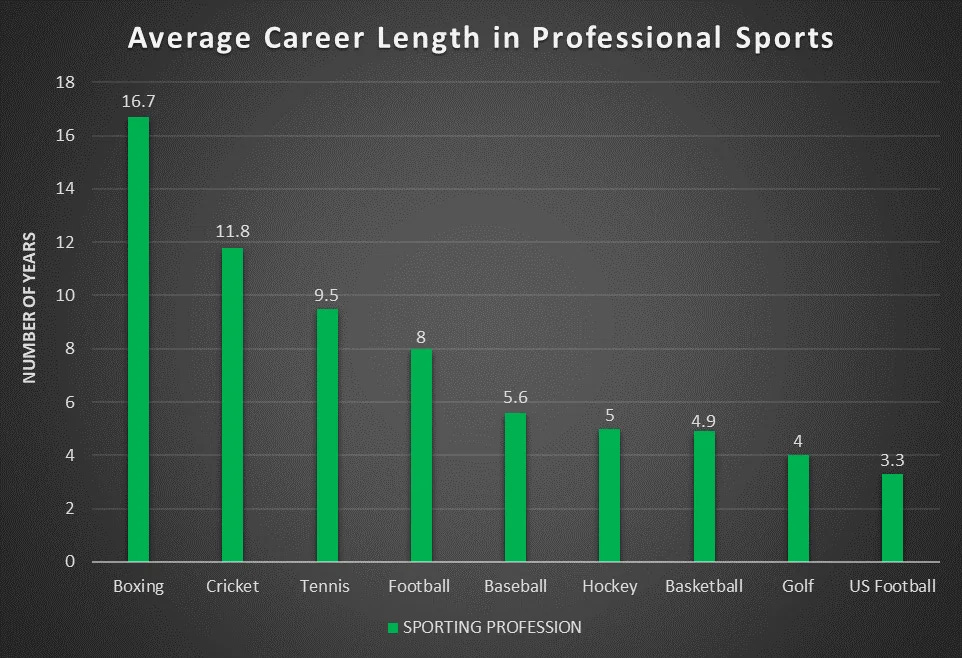An annual itch to start seeds
I’m in my 30th year of this rite of spring and show no mental of physical side-effects
With his seed catalogs spread out around him, he felt he could dispel winter and start a new beginning. Hope springs eternal. - Kathryn Freeman
We’re entering the thick of seed-starting season here in the Northeast and by my count this is my 30th year at it. That’s the great thing about gardening. By your 30th season you’re just beginning to hit your prime.
According to Data is Beautiful, a fascinating subReddit I just discovered, professional boxers have an average career of 16.7 years, followed by those who play cricket as a profession (11.8) and tennis (9.5). The average length of an NFL career? 3.3 years. Nothing surprising there, but that's another story much has been written about. (Here’s part of a series or articles on the topic I worked on with Sally Jenkins and Rick Maese at The Washington Post a few years ago.)
I for one am feeling no physical or mental side-effects from my 30 years of sowing. Putting tiny seeds into soil, adding a little water and sitting back to watch remains irresistible to me. It’s a sign of renewal and provides an annual does of optimism. It's a time when anything is possible.
The itch to get going starts hitting most gardeners around New Year’s Day but I’ve learned to hold back my impulses. Years ago I started tomatoes in the basement of my home outside Washington way, way too early. By April my plants were 10-12 inches high and looping back onto themselves under the fluorescent shop lights I had set up for them to grow under. If we had LEDs back then they might have produced tomatoes! Even in the mid-Atlantic, tomatoes can’t go into the garden safely until mid-May. Up here in the Berkshires where I now live, it’s late May, or even June 1, though you can sneak them out into the garden a week or so earlier if the weather forecast looks favorable. I’ve found you don’t gain much by going early, though.
To figure out a good time to start my seeds I’ve learned to know my area’s last frost date (up here it’s May 13 or thereabouts). Just google it with your zip code, though here’s one good site that’ll tell you. Depending on what you’re growing, just back out the number of days they’ll need to germinate and get large enough to plant out and that’s when you can start your seeds. Most of this information is on the seed packets. Tomatoes take about eight weeks indoors before they can go out into the garden. Leafy greens like kale, spinach and lettuce take less time to get ready, as little as four weeks, and can go into the garden in April because they’re pretty cold tolerant. You do have to harden everything off first by exposing them to a little bit of sunshine and the outdoors each day for about a week. Be careful not to give them too much sun too soon.
Whole books have been written about this. Among the best I’ve found are Niki Jabbour’s Year-Round Vegetable Gardener, The Vegetable Gardening Book by Joe Lamp’l, and The Vegetable Gardener’s Bible by Edward C. Smith. And if you want to read about everything tomato, the Bible is Epic Tomatoes by Craig LeHoullier.
I’ll review some of my favorite gardening books in a future newsletter.
Anyway, 30 years on I’m still feeling spritely, and I’m still experimenting and buying new seed starting trays and devices to try out. I’ve never settled on a method, but that’s part of the fun. There are almost as many ways to start seeds as there are seeds themselves (that’s a huge lapse into hyperbole). The point is, it’s fun and not hard.
Here’s a look at my seed starting setup in the cellar this spring, where the temperature’s been hovering between 58 and 62 degrees. (The pink lights are from my new LEDs; the white lights are T5 fluorescent bulbs.)
